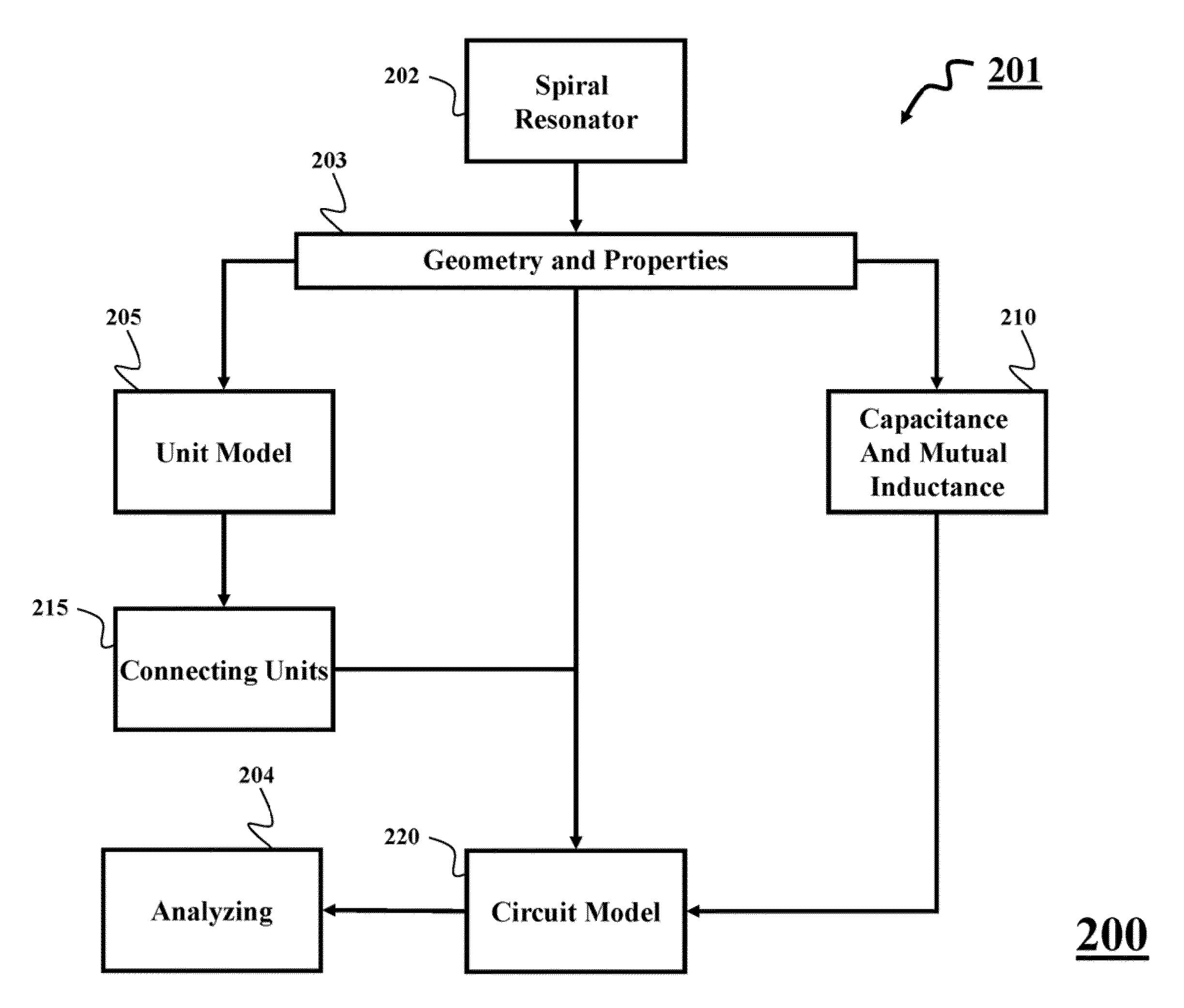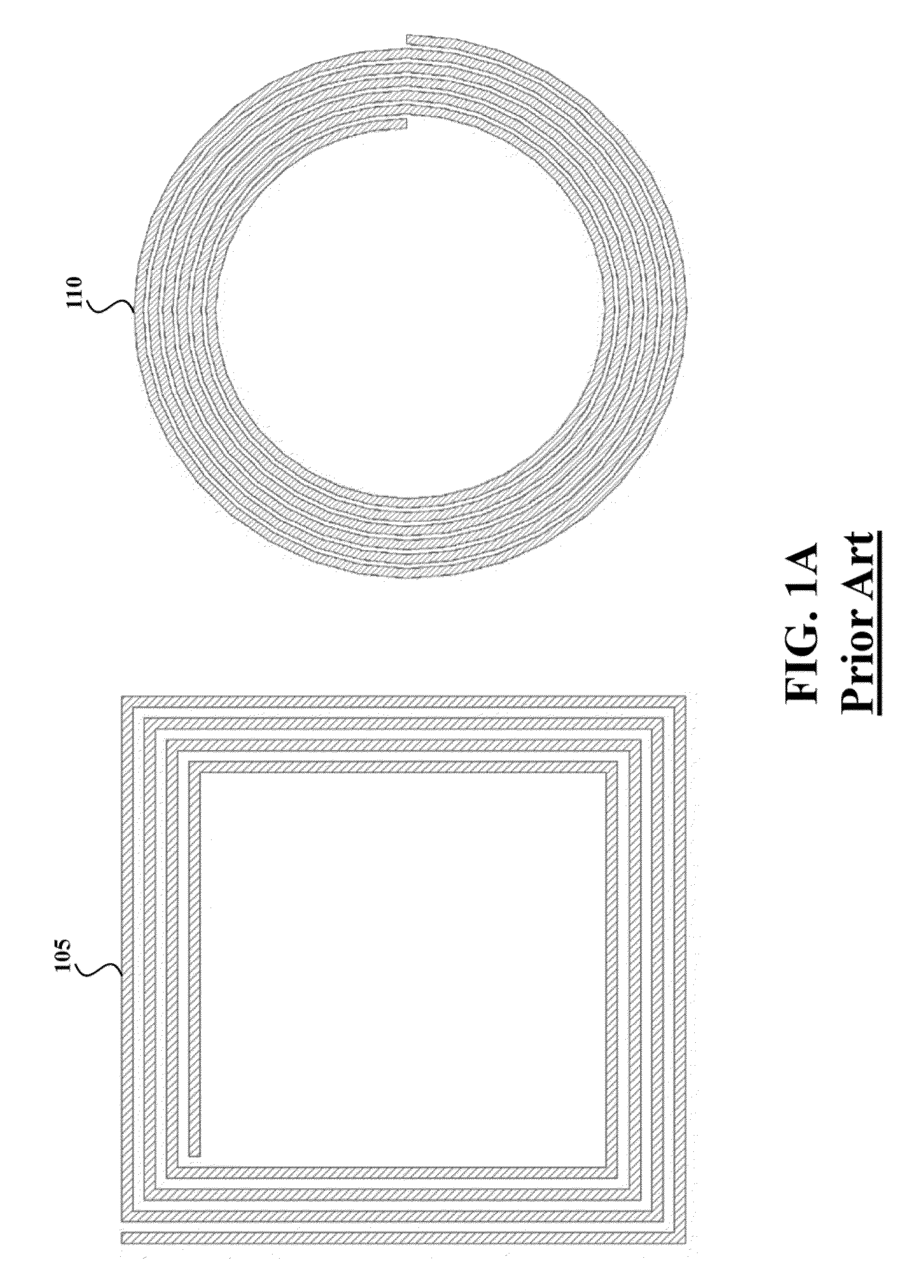System and Method for Analyzing Spiral Resonators
a spiral resonator and spiral resonator technology, applied in the field of systems and methods for analyzing spiral resonators, can solve the problems of insufficient models for some applications, methods not necessarily producing the same, and inability to meet the requirements of the application,
- Summary
- Abstract
- Description
- Claims
- Application Information
AI Technical Summary
Benefits of technology
Problems solved by technology
Method used
Image
Examples
Embodiment Construction
[0055]The embodiments of the invention provide a method for analyzing a spiral resonator.
[0056]Problem Formulation
[0057]A tank circuit model for analyzing a spiral resonator assumes a uniform current density throughout the length of the spiral(s). This assumption is incorrect, because the current density distribution resembles a standing wave in which the nodes of the standing wave are located at the open leads of the spiral resonator.
[0058]Another problem with the tank circuit model is that the model cannot be used to gain insight into the electromagnetic properties of each loop of the spiral resonator and the interaction between the loops. The tank circuit model is like a black box in which the geometric properties of the spiral resonator are the inputs and only the resonant frequency of the spiral resonator is the output. An additional flaw in the tank circuit model of a spiral resonator is that it implicitly implies that a spiral resonator only has a single resonant frequency. H...
PUM
 Login to View More
Login to View More Abstract
Description
Claims
Application Information
 Login to View More
Login to View More - R&D
- Intellectual Property
- Life Sciences
- Materials
- Tech Scout
- Unparalleled Data Quality
- Higher Quality Content
- 60% Fewer Hallucinations
Browse by: Latest US Patents, China's latest patents, Technical Efficacy Thesaurus, Application Domain, Technology Topic, Popular Technical Reports.
© 2025 PatSnap. All rights reserved.Legal|Privacy policy|Modern Slavery Act Transparency Statement|Sitemap|About US| Contact US: help@patsnap.com



